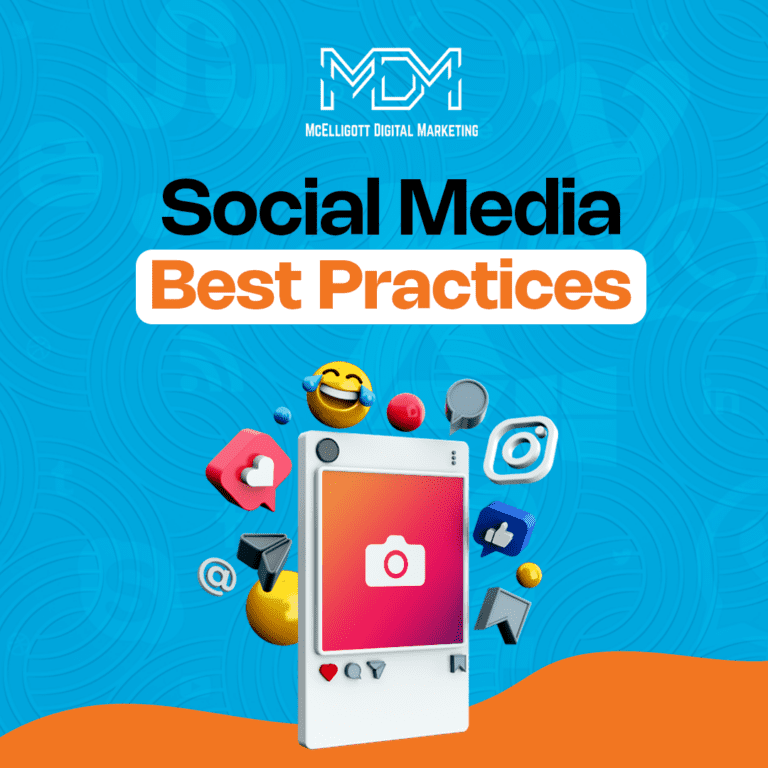Social media presence is the oxygen for brands and creators looking to engage an audience online. That’s why you need to adapt the best practices for social media marketing to grow faster in 2025.
Social media best practices change quickly; what worked a few months back may not work now. Hashtags are one good example of this fast change in social media marketing best practices. So if you have a chalked-out list of the social media best practices for 2025, your social strategy will be easier and ever effective.
In this blog, you’ll learn the social media best practices that will keep you ahead with your social media marketing in 2025.
15 Social Media Best Practices in 2025
1. Understand your audience with research and listening
To create effective social media strategies, you need to understand your audience. Start by researching who they are, what they enjoy, and how they engage with your brand. Tools like surveys, polls, and platform analytics can help you uncover valuable insights about their demographics, behaviors, and preferences.
Social listening is another powerful step. It involves tracking conversations about your brand, competitors, and industry trends. Tools such as Hootsuite or Brandwatch make it easy to monitor mentions, hashtags, and customer feedback.
When you combine audience research with social listening, you gain a deeper understanding of their needs and challenges. This makes it easier to create content that feels personal and engaging. As a result, you build stronger connections with your followers and make your brand more relatable and responsive.
2. Personalized interaction
Being responsive and personal helps build trust and loyalty. Respond quickly to comments, DMs, and mentions to show your audience that you care.
Chatbots are great for instant replies, but make sure to personalize your interactions. Address users by name and tailor your responses to their specific questions.
Personalization is more than just using names. It’s about sharing content that matches your audience’s preferences. Use data to segment your audience and deliver posts, offers, or recommendations that resonate with each group.
Netflix does this well by recommending shows based on what you watch. This keeps people engaged and happy, boosting loyalty and retention.
Social media becomes a two-way conversation when you’re both responsive and personal. It’s not just about posting, but about building real connections with your audience.
3. Picking the right platforms
Choose the right social media platforms to reach your audience. Don’t try to be on every platform. Focus on where your audience spends the most time. For example, Instagram and TikTok are good for visual businesses, while LinkedIn is better for B2B companies.
Research the demographics and behaviors of each platform to see where you’ll get the best results. Once you know which platforms to use, create content that fits each one’s style and audience.
LinkedIn and Twitter might be better than Facebook if your target is young professionals. Being present on the right platforms helps you use your resources effectively and increases your reach and engagement.
4. Learn and adapt to algorithms and social SEO
Social media algorithms and social SEO (Search Engine Optimization) decide how people see and interact with your content. Each platform has an algorithm that chooses what shows up in users’ feeds. These algorithms prioritize content based on relevance, engagement, and timing. To reach more people, you need to understand how they work and adjust your strategy.
Instagram’s algorithm likes posts with lots of saves and shares. So, create content that encourages shares and comments to increase your visibility. Use the right keywords and hashtags to help people find your content and bring in organic traffic.
Stay updated on algorithm changes and follow social SEO best practices.
5. Feature known faces and customers in your posts
Featuring customers and trusted faces in your content helps build trust. Show real people, like through testimonials, user-generated content, or behind-the-scenes stories. This makes your brand feel more human and relatable.
For example, sharing customer success stories or highlighting employees creates a sense of community. Brands like Starbucks and GoPro do this well by reposting customer photos and videos. This makes the content feel authentic and connects with the audience.
When customers see real people they can relate to, it builds confidence in your brand. It also encourages them to engage more with your content and products.
6. Show your product in action
Showing your product in action makes your brand feel real and relatable. Instead of just posting product images, share videos or photos of how your product works in real life. This helps your audience see the true value of what you’re offering.
Fitness brands like Nike post videos of athletes using their products during workouts. Beauty brands like Fenty Beauty show real customers using their makeup in everyday situations.
When you show your product in action, it builds trust. It also shows how your product can solve problems and improve lives, which can lead to more conversions.
7. Be careful while taking stands
According to the Index, only 25% of consumers believe the most memorable brands on social media speak out about causes that match their values.
People are cautious about brands that make inauthentic statements. It’s important to know your brand’s values and stand up for issues that align with them. For example, L.L. Bean paused its social media during Mental Health Awareness Month. This action reflects their values and mission.
8. Use video formats creatively
Video is one of the most engaging types of content on social media. To keep your audience interested, get creative with different video formats. Try short-form videos like TikToks and Instagram Reels, behind-the-scenes clips, live streams, or product demos. Mixing things up keeps your feed fresh.
Red Bull uses high-energy videos to engage its audience. Sephora, on the other hand, shares tutorials and live Q&A sessions to connect with followers. Using different video formats helps you engage more people. It increases interaction and keeps your content exciting.
9. Utilize automation combined with human touch
As customers expect faster and more personalized responses, it adds pressure on busy teams. AI and automation can help ease this burden.
In 2024, 54% of marketers plan to use self-service options like chatbots and FAQs for social customer support. AI tools like ChatGPT are also being used to quickly respond to customer questions.
However, make sure responses match your brand’s voice. Relying too much on AI without a personal touch can hurt trust. Many customers are already cautious about AI-driven communication.
Speed is important in social customer service. A study shows that 76% of consumers care about how fast a brand responds. It’s time to improve how you handle social customer care.
In 2024, 58% of social and marketing teams will work together on social customer support. If your teams aren’t already collaborating, now’s the time. Work together on social media monitoring, creating FAQs, and developing automated responses.
To scale efficiently, use AI tools for automation. These tools combine social media and customer service to give you a complete view of brand interactions.
10. Make response time faster with AI
AI can improve both the speed and quality of your social media interactions. It automates routine responses and monitors customer queries. Tools like chatbots and automated messaging systems ensure quick replies, even during off-hours. This reduces response times, boosts customer satisfaction, and lightens the load on your team.
AI also helps improve your overall strategy. It analyzes customer data and engagement patterns. AI can spot trends, suggest content improvements, and recommend the best times to post. With these insights, you can make smarter decisions and optimize your content to match customer needs.
Remember to use AI as a tool, not a replacement. Keep responses human and in line with your brand voice.
11. Respond to comments and DMs
Responding quickly to DMs and comments is important for keeping your audience engaged. When you reply fast, it shows that you value their input. This helps build trust and encourages more interaction.
Answering questions and feedback promptly makes your audience feel heard. It also helps prevent small issues from growing and shows that your brand cares about customer satisfaction.
Set guidelines for your team to follow. Use automation tools when needed, but always personalize responses to match your brand’s tone.
12. Define your brand guidelines and keep your team aware of it
Consistency is key to building a strong, recognizable brand. Make sure your messaging, tone, and visuals are the same across all social platforms. Clear brand guidelines help your team communicate in a unified way, whether they’re replying to customers, creating content, or engaging on social media.
Your guidelines should cover your brand’s voice, colors, fonts, and imagery. They should also outline how to handle customer interactions. For example, decide if your brand will have a friendly, casual tone or a more professional one- whatever fits your identity.
Have these guidelines to ensure your brand stays consistent. It helps build trust, resonate with your audience, and provide a smooth experience across all platforms.
13. Reuse your digital assets
Make the most of your existing content and digital assets. Instead of creating new content, reuse what you already have. Repurpose blog posts into social media infographics. Turn webinars into short video clips for platforms like Instagram or TikTok.
You can also update and curate older content to keep it fresh. This saves time and resources while ensuring your content stays relevant.
Using existing content in different ways helps you stay consistent. It engages your audience and increases your brand’s visibility without constantly creating new content.
14. Your social media strategy should sync with your business goals
To get the most from your social media, make sure it aligns with your business goals. Whether you want to increase brand awareness, drive sales, or grow your customer base, your social media should support these objectives.
Start by setting clear goals for your social media campaigns. For example, aim to grow your followers, increase engagement, or generate leads. Then, create content and choose platforms that help you achieve these goals.
If lead generation is your goal, focus on creating shareable content, paid social media advertising, and driving traffic to landing pages. Aligning your strategy with your business goals helps you stay focused. It also makes it easier to measure success and ensures every post has a purpose.
15. Rethink your approach to trends
Using trends can help increase brand awareness, but don’t follow every trend just because it’s popular. It can make your brand seem fake and short-term. 38% of consumers say the best brands focus on original content, not just trends.
Find a balance. Use trends that fit your brand, but also create unique content. Look at your social media analytics to see which posts get the most engagement. Engaging with trends in this way keeps you relevant without losing your authenticity. It helps you stay part of the social conversations while staying true to your brand’s purpose.
Conclusion
Trends can change fast, but some social media practices remain ever-important. When you’re unsure, focus on the basics- track your performance, engage with your audience consistently, and adjust your strategy based on the data. These timeless strategies help you stay on track, no matter how fast the changes occur.
Ready to put these best practices into action and see results? McElligott Digital Marketing can help with your social media management. We help you build a social media strategy from scratch to success.
Get a FREE consultation today at (833) 772-4897.
Social media best practices FAQs
1. What are the top three best practices for social media marketing?
Start with a clear strategy. Define your goals and what you want to achieve. Understand your audience by paying attention to how they interact with your content. Measure performance regularly to track your success and make improvements.
2. What is the 5:3:2 social media rule?
Curate five posts from other sources. Create three original posts that provide value. Share two fun and entertaining posts to show your brand’s personality. This rule helps keep your content balanced.
3. What should I do when using social media for marketing?
Reply quickly to messages and comments. Use eye-catching visuals like images and videos. Post regularly to keep your audience engaged.
4. What should I avoid when using social media for marketing?
Don’t spam your followers with too many posts. Avoid using too much promotional language. Never ignore feedback from your audience. Always listen and respond.





